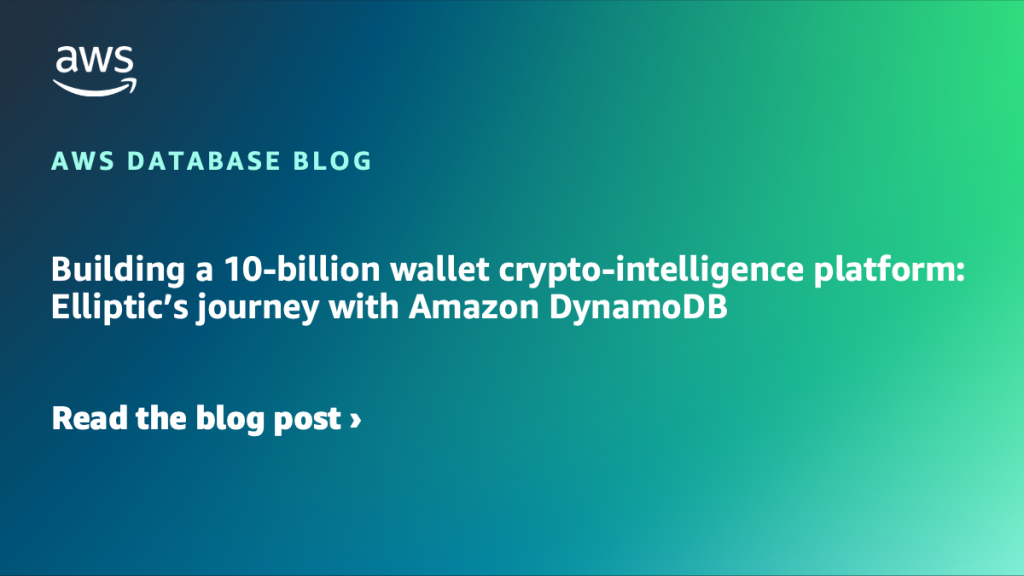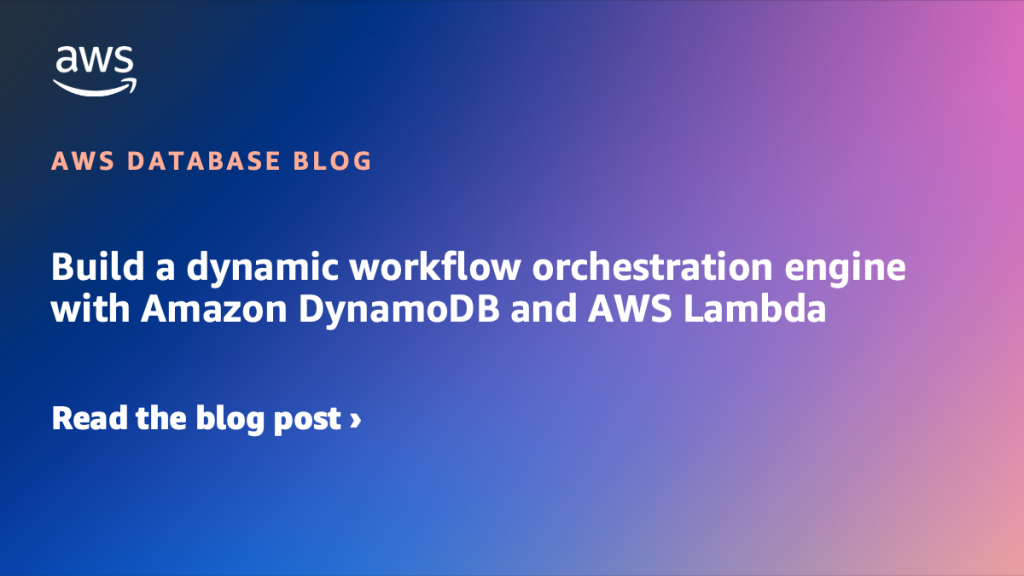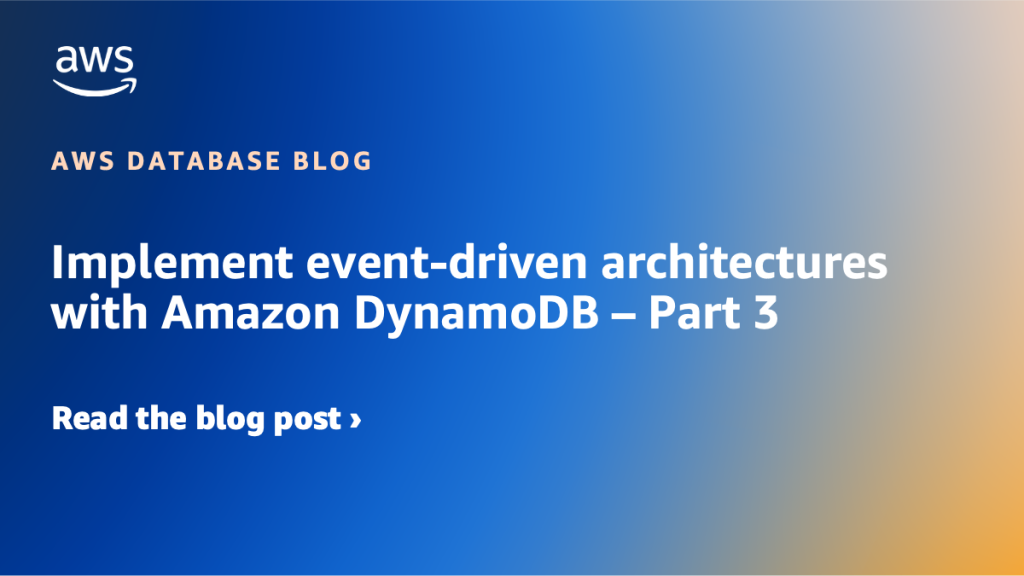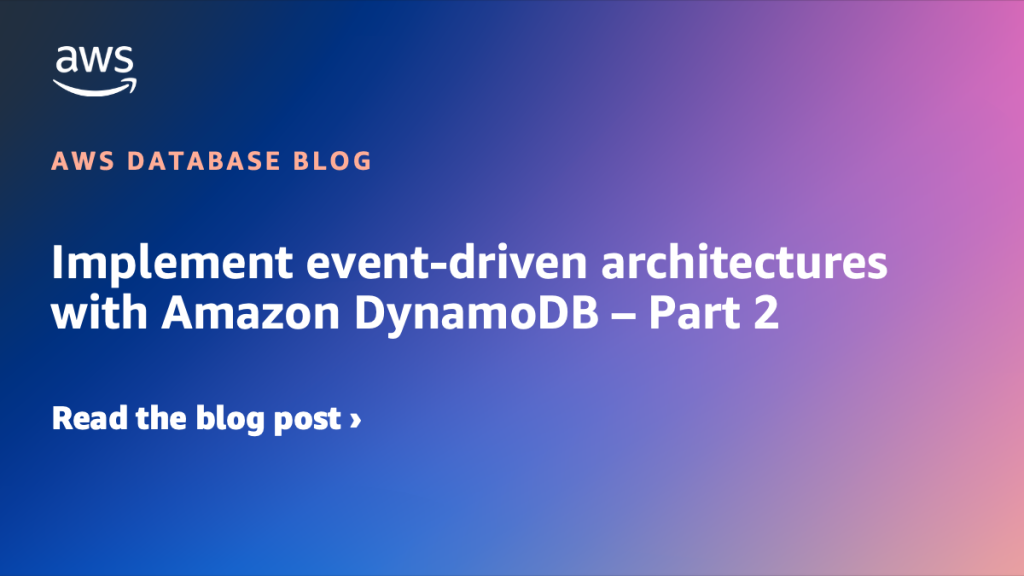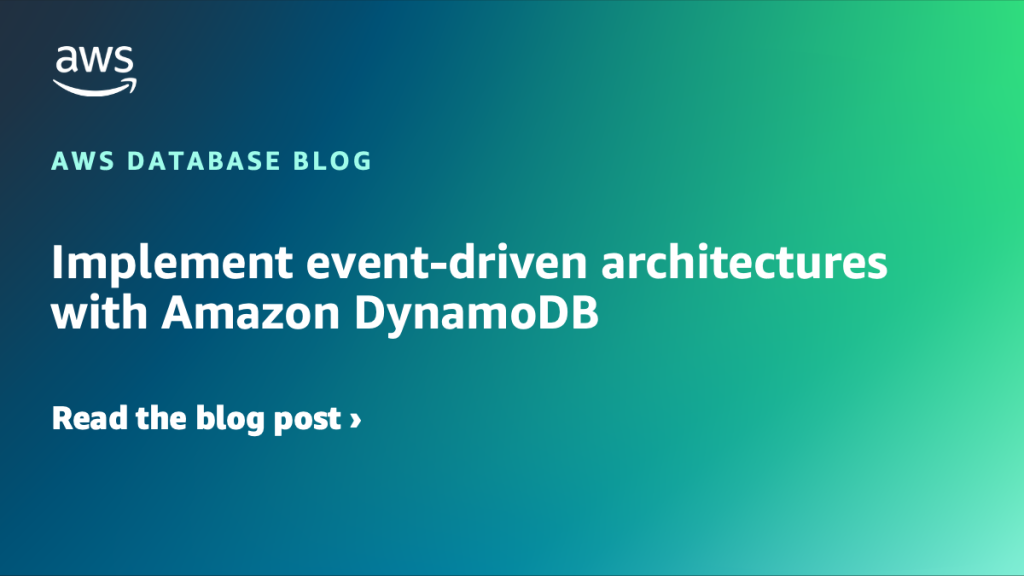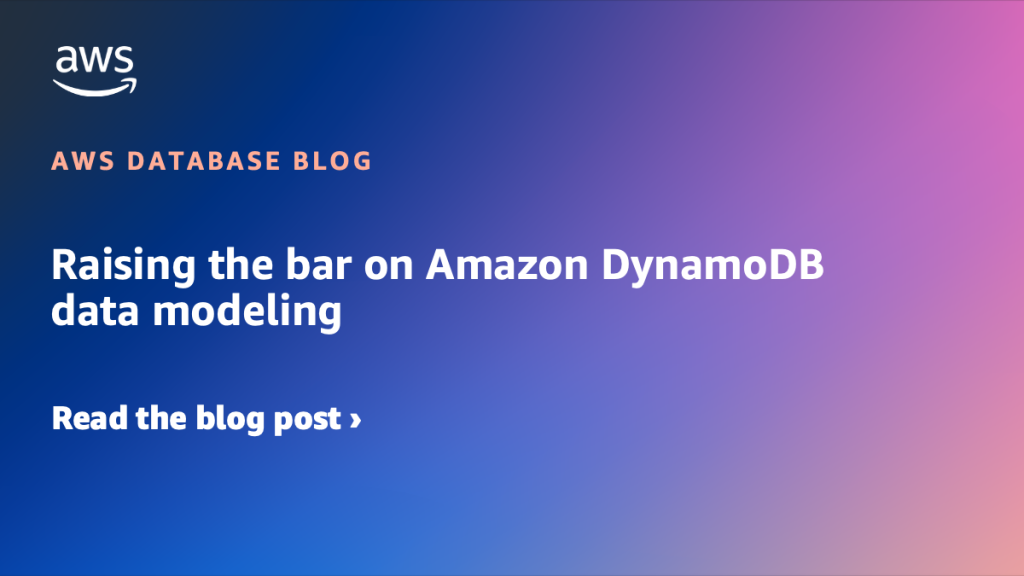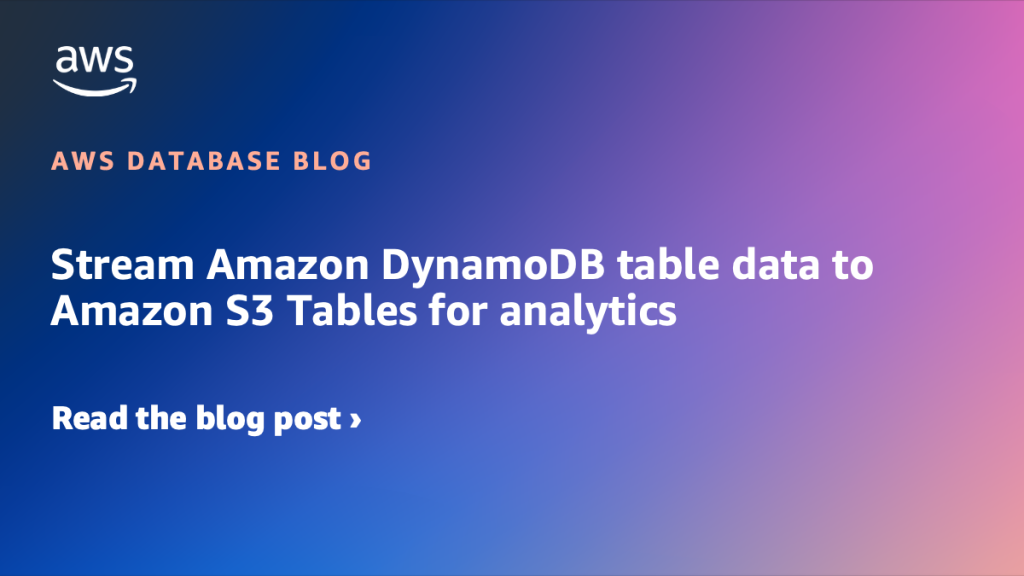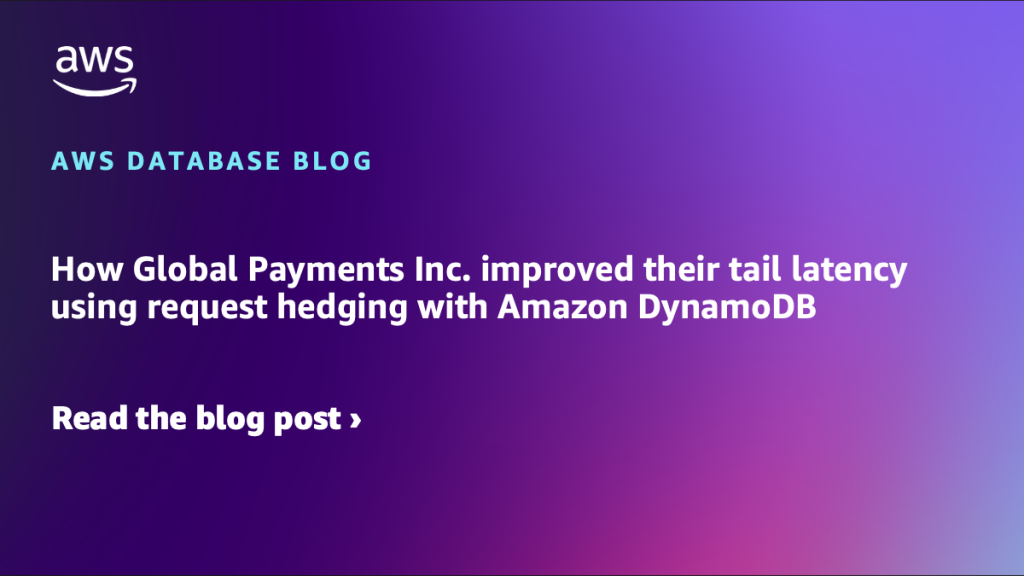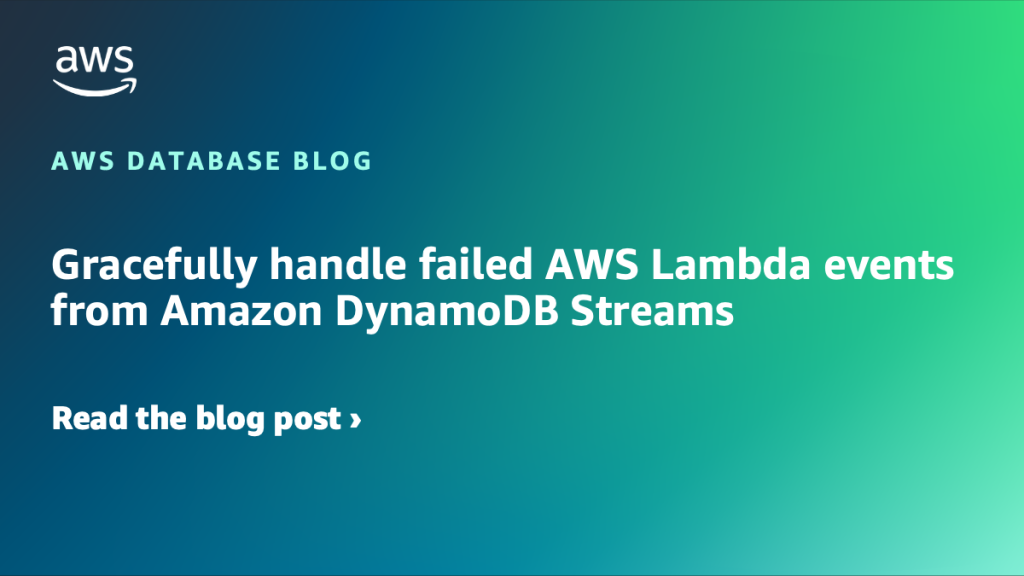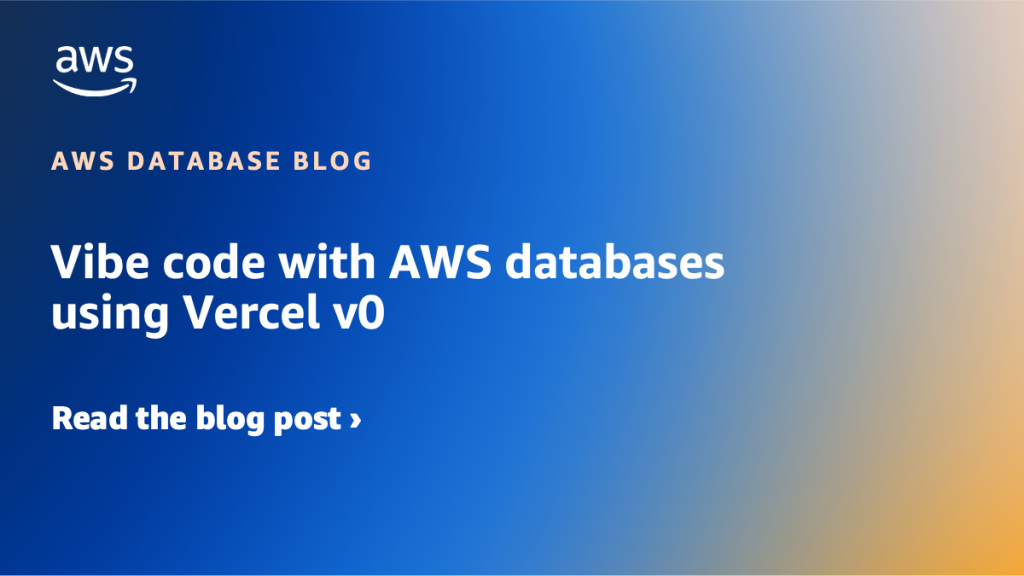AWS Database Blog
Category: Amazon DynamoDB
Building a 10-billion wallet crypto-intelligence platform: Elliptic’s journey with Amazon DynamoDB
In this post, we explore how Elliptic uses Amazon DynamoDB to build a crypto-intelligence platform that scales to over 10 billion wallets globally and supports real-time risk detection across the fast-evolving digital asset ecosystem. We discuss the data model design, indexing strategies, and operational setup that Elliptic uses to power real-time risk analysis and complex investigations at scale.
Build a dynamic workflow orchestration engine with Amazon DynamoDB and AWS Lambda
In this post, I show you how to build a serverless workflow orchestration engine that uses Amazon DynamoDB and AWS Lambda. The complete implementation is available in a GitHub repository, which includes two fully functional examples that you can deploy and run immediately to see the orchestration engine in action.
Implement event-driven architectures with Amazon DynamoDB – Part 3
In this three-part series, we explore approaches to implement enhanced event-driven patterns for DynamoDB-backed applications. Throughout this series, we’ve examined various strategies for managing data within DynamoDB. This post shifts the focus to an event-driven pattern that reliably schedules future downstream actions using EventBridge Scheduler.
Implement event-driven architectures with Amazon DynamoDB – Part 2
In this three-part series, we explore approaches to implement enhanced event-driven patterns for DynamoDB-backed applications. In this post (Part 2), we explore another method which uses global secondary indexes (GSIs) to handle fine-grained Time to Live (TTL) requirements.
Implement event-driven architectures with Amazon DynamoDB
In this three-part series, we explore approaches to implement enhanced event-driven patterns for DynamoDB-backed applications. In this post (Part 1), we focus on improving DynamoDB’s native TTL functionality by implementing near real-time data eviction using EventBridge Scheduler, reducing the typical time to delete expired items from within a few days to less than one minute.
Raising the bar on Amazon DynamoDB data modeling
In April 2025, we introduced the Amazon DynamoDB data modeling tool for the Model Context Protocol (MCP) server. The tool guides you through a conversation, collects your requirements, and produces a data model that includes tables, indexes, and cost considerations. In this post, we show you how we built this automated evaluation framework and how it helped us deliver reliable DynamoDB data modeling guidance at scale.
Stream Amazon DynamoDB table data to Amazon S3 Tables for analytics
In this post, we demonstrate how to stream data from DynamoDB to Amazon S3 Tables to enable analytics capabilities on your operational data.
How Global Payments Inc. improved their tail latency using request hedging with Amazon DynamoDB
Amazon DynamoDB delivers consistent single-digit millisecond performance at any scale, making it ideal for mission-critical workloads. However, as with any distributed system, a small percentage of requests may experience significantly longer response times than the average. This phenomenon, known as tail latency, refers to these slower outliers that can be seen by looking at metrics such as the 99th or 99.9th percentile of response times. In this post, we explore how Global Payments Inc. (GPN) reduced their tail latency by 30% using request hedging. We review the technical details and challenges they faced, providing insights into how you can optimize your own latency-sensitive applications. In a next post we’ll share detailed implementation examples.
Gracefully handle failed AWS Lambda events from Amazon DynamoDB Streams
In this post, we show how to capture and retain failed stream events for later analysis or replay using Amazon S3 as a durable destination. We compare this approach with the traditional Amazon SQS dead-letter queue (DLQ) pattern, and explain when and why Amazon S3 is a preferred option.
Vibe code with AWS databases using Vercel v0
In this post, we explore how you can use Vercel’s v0 generative UI to build applications with a modern UI for AWS purpose-built databases such as Amazon Aurora, Amazon DynamoDB, Amazon Neptune, and Amazon ElastiCache.
